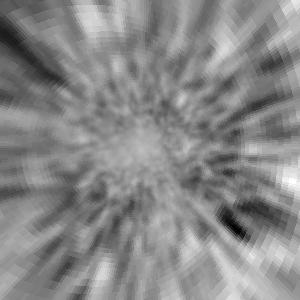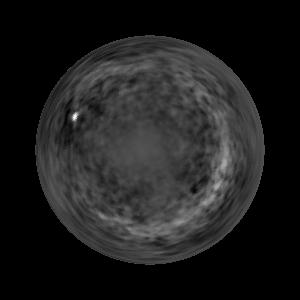This image from 2008-12-10 09:39:28 is pretty interesting…

It looks like we are seeing some very special object with rings around it. What’s going on here?
This is a COMPTEL image, one of the lowest resolution surveys we have in SkyView. It’s taken in the hard X-ray/Soft gamma ray regime where it’s very difficult to build an imaging detector at all. The method used requires a complex deconvolution and yields at best a resolution of a few degrees. So the pixels are very large and the image would – absent distortions – cover almost the entire sky. However, you can’t project such a large region of the sky onto a single plane image without very large distortions. In fact the default projection that SkyView uses, the Tangent plane or Gnomonic projection, only shows half the sky no matter how big we make our image. The great circle 90 degrees from the center of the field of view is off at infinity. It’s rather like the way Mercator maps get enormously distorted as you near the poles — and even so you can never quite get there.
The middle of the image is reasonable enough, but as we approach the edges pixels are being stretched out in a radially symmetric pattern.
Another projection can show the whole sky in a more understandable fashion. One might try an Aitoff or Cartesian projection if you know that you want to see the entire sky. However if you want to make sure that a given point is at the center of the map, then something like the ZEA (for Zenithal Equal Area) projection might be nice. Here we’ve redone the picture in that projection:

The entire sky is shown here with the point opposite the requested center forming an infinitesimally thin ring around the image. So it is still distorted, but in a way that doesn’t obscure the global features as much. Every pixel represents the same area in the sky. The plane of our Galaxy shows up clearly as a circle of enhanced emission and the bright spot is the Crab nebula.
The lesson here is that you need to adapt your projection to the application. Some projections, e.g., the Tangent or Sine projections just won’t do very well for large fields of view. Others, e.g., the Cartesian projection near the pole, can be a poor choice when looking at a particular small region of the sky.

The sky is very beautiful, i am obsessed with pictures of sky and galaxies. I find this article very beneficial, thank you so much.